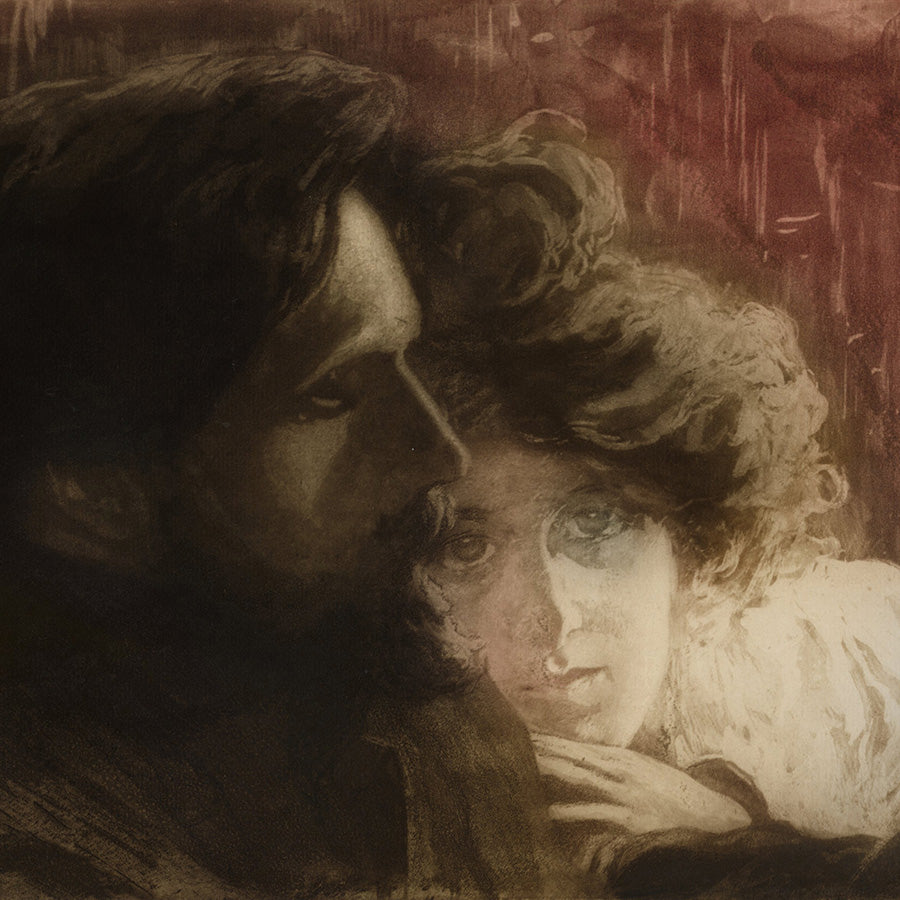 Sold
Sold
Beethoven, Kreutzer Sonata
BALESTRIERI, Lionello
Color aquatint on laid paper, mounted on japon, circa 1902.Edition unknown, but certainly small, if any was issued at all. We have never encountere...
View full detailsBorn in Cetona, in central Italy, to a family of humble means, Lionello Balestrieri (1872-1958) doesn’t seem to have been held back by his family. At a young age, Lionello was allowed to move to Rome first, then Naples, in order to enroll in fine art classes. While he needed to support himself doing commercial work, the young artist quickly developed, and left Italy for Paris by age 20. Under the tutelage of Osvaldo Tofani, an Italian compatriot, Balestrieri quickly improved as a painter and learned printmaking. By 1899 he had painted his masterpiece, titled Beethoven (Kreutzer Sonata), which won him a prize at the 1900 Paris Exposition, and in Venice a year later. His career was launched. And Balestrieri’s predilection for depicting musicians became a constant. His compositions tend to favor renditions of pathos, with emotions easily read on his subjects’ faces, or translated by strong compositional structure. As such he has sometimes been called a Romantic. At the onset of World War I, Balestrieri returned to Naples where his artistic life had begun in earnest more than 20 years earlier. He became a teacher and allowed his style to evolve; he even dabbled in Futurism inspired painting. His prints, which are mostly color aquatints, are very well-crafted translations of his most successful paintings. He managed in them to render his painterly vision with great effect. Dating of these prints is rare, which makes it hard to ascertain when he created them. Thought it seems he used his aquatints as a means to promote contemporary paintings. His prints were likely generally printed in editions of 100, though they have become rather scarce today.
 Sold
Sold
Color aquatint on laid paper, mounted on japon, circa 1902.Edition unknown, but certainly small, if any was issued at all. We have never encountere...
View full detailsPlease sign up for our newsletter
Email: info@armstrongfineart.com
Phone: 773-887-6776
1200 West 35th Street, #186
Chicago, IL 60609
Copyright © 2026 Armstrong Fine Art.
Development by Alo Agency. Powered by Shopify
